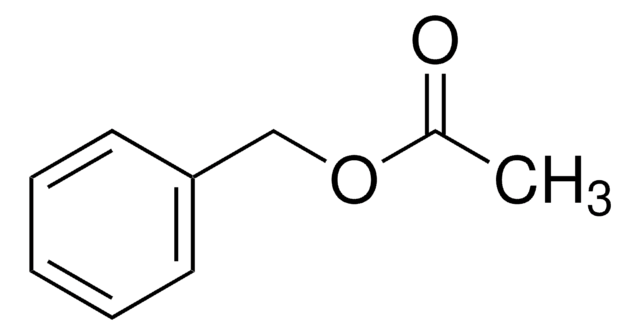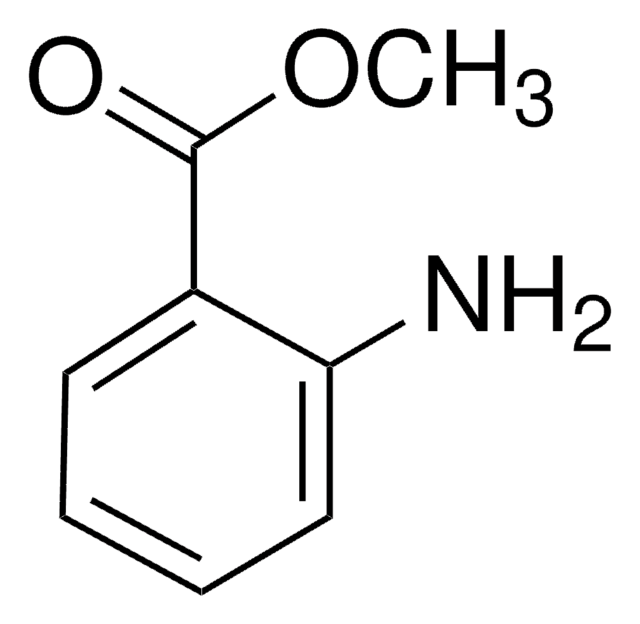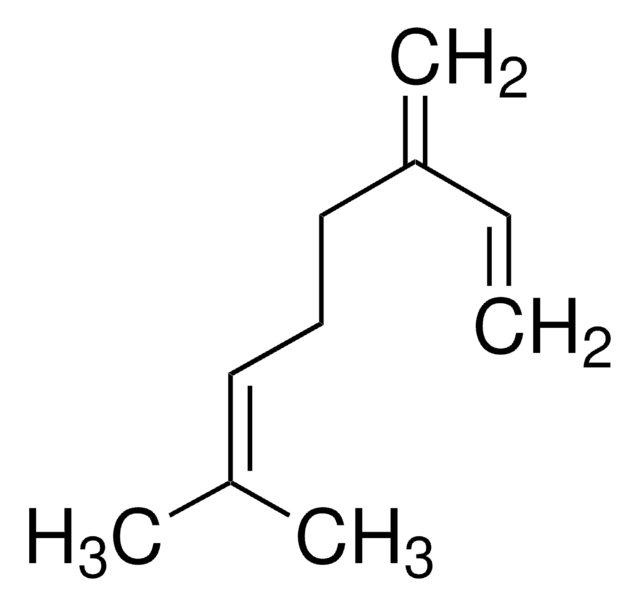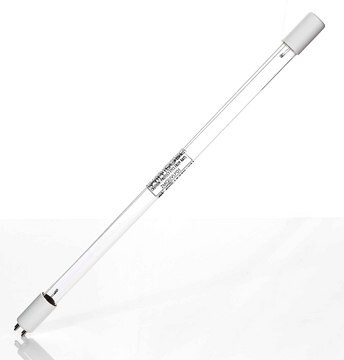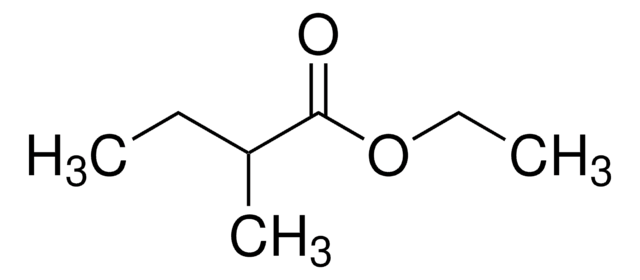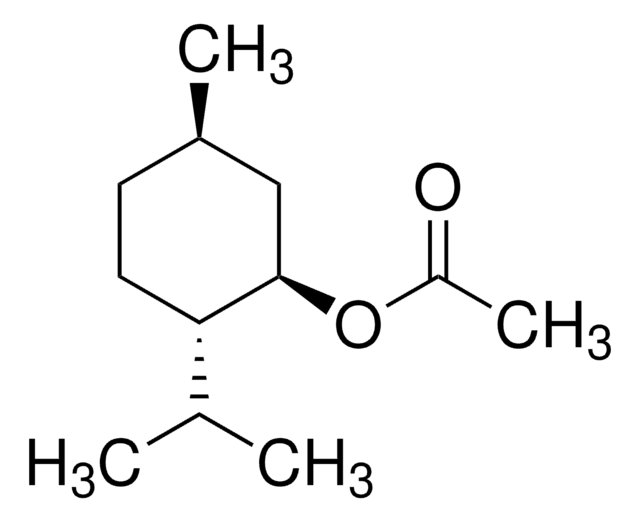W213500
Benzyl acetate
≥99%, FCC, FG
Synonyme(s) :
Benzyl ethanoate, Acetic acid benzyl ester
About This Item
Produits recommandés
Source biologique
synthetic
Niveau de qualité
Qualité
FG
Halal
Kosher
Agence
meets purity specifications of JECFA
Conformité réglementaire
EU Regulation 1334/2008 & 178/2002
FCC
FDA 21 CFR 117
FDA 21 CFR 172.515
Pression de vapeur
23 mmHg ( 110 °C)
Essai
≥99%
Température d'inflammation spontanée
862 °F
Indice de réfraction
n20/D 1.502 (lit.)
pb
206 °C (lit.)
Pf
−51 °C (lit.)
Densité
1.054 g/mL at 25 °C (lit.)
Application(s)
flavors and fragrances
Documentation
see Safety & Documentation for available documents
Allergène alimentaire
no known allergens
Propriétés organoleptiques
floral; fruity; sweet
Chaîne SMILES
CC(=O)OCc1ccccc1
InChI
1S/C9H10O2/c1-8(10)11-7-9-5-3-2-4-6-9/h2-6H,7H2,1H3
Clé InChI
QUKGYYKBILRGFE-UHFFFAOYSA-N
Vous recherchez des produits similaires ? Visite Guide de comparaison des produits
Catégories apparentées
Description générale
Application
- Transcriptomic and proteomic approaches to explore the differences in monoterpene and benzenoid biosynthesis between scented and unscented genotypes of wintersweet.: This study examines the biosynthesis pathways of monoterpenes and benzenoids, including benzyl acetate, in different genotypes of wintersweet. By using transcriptomic and proteomic methods, the researchers identified key genes and proteins involved in the production of these compounds, providing insights into the biochemical mechanisms underlying their biosynthesis. This research has implications for understanding the metabolic engineering of fragrance compounds in plants (Tian et al., 2019).
Mentions de danger
Conseils de prudence
Classification des risques
Aquatic Chronic 3
Code de la classe de stockage
10 - Combustible liquids
Classe de danger pour l'eau (WGK)
WGK 1
Point d'éclair (°F)
203.0 °F - closed cup
Point d'éclair (°C)
95 °C - closed cup
Équipement de protection individuelle
Eyeshields, Gloves, type ABEK (EN14387) respirator filter
Faites votre choix parmi les versions les plus récentes :
Déjà en possession de ce produit ?
Retrouvez la documentation relative aux produits que vous avez récemment achetés dans la Bibliothèque de documents.
Les clients ont également consulté
Notre équipe de scientifiques dispose d'une expérience dans tous les secteurs de la recherche, notamment en sciences de la vie, science des matériaux, synthèse chimique, chromatographie, analyse et dans de nombreux autres domaines..
Contacter notre Service technique